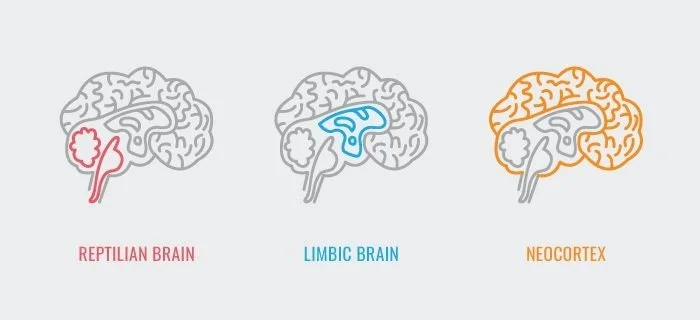How Successful Executives Use Brain Science to Think Clearly and Influence People
I’ve read (and highly recommend) the Goldfish series by Stan Phelps & Evan Carroll — a collection of books about leadership, management, sales, and marketing.
I’m pleased to know Stan Phelps, who’s been kind enough to have me on his advanced reader team for some of his books — he was also on the advanced reader team for my book!
The first book in the series I read was Diamond Goldfish – Excel Under Pressure & Thrive in the Game of Business. It outlines four different personality styles. It also talks about how sales and customer service are about more than just technical expertise. How you make someone feel is the key difference and makes you stand out.
There are three main steps outlined in the book:
Understand your own biology
Understand your customers’ biology
Satisfy your own instinctive concerns while addressing the needs of the customer
One of the most fascinating sections is about the purpose of certain parts of the brain.
The amygdala is the most primitive part of the brain — it governs aggression, joy, sadness, and fear. The limbic, or mid-brain, is responsible for storing emotions, memories and helps with bodily functions. The neocortex activates our higher-level thinking – this is the uniquely human part of the brain and allows us to have complex thought, language, art, science, etc.
Back to the amygdala for a second – often referred to as the “reptilian” part of the brain. Most often, we’re told this is the “bad” part of our brain because of the instincts and behaviors it invokes. But let’s acknowledge the amygdala for the good it does. It scans the environment for threats. Yes, these can invoke the “flight or fight” responses – think mama bear protecting her young against all odds – but these instincts serve their purpose. They’ve kept us vigilant to threats over centuries. When we need that burst of energy and power in big moments, it’s kept us alive. Credit where credit is due.
However, the danger comes from invoking and applying a dose of primitive emotion to a non-life-threatening event. If you’re responding with mortal rage when you’re not cc-ed on an email, you’re using the wrong tool for that situation.
When we perceive a threat, our amygdala picks it up – which then can light up our limbic system (getting us ready to physically do something). Guess what happens to our neocortex? The amygdala says, “Take a seat.” For the vast majority of situations we navigate today, we want our neocortex to be in the driver’s seat. This is where we’re thinking clearly, creatively problem-solving, and showing up at our best.
Understand this process. Know when and what appropriate part of your brain applies to your situation. If it’s a life or death situation, amygdala all the way. Pretty much anything else, neocortex is your friend. This includes identity-risk situations and blows to the ego – not pleasant, but not leading to death or the end of the species.
Be aware of when your survival instincts are kicking in. I know when I’m getting emotional or angry at a visceral level because my body temperature rises, I tense up, and I feel an adrenaline rush hit me in the gut.
I used to act on this as a course of habit. The result? Not a good look. Not a good leadership style. Now, I’m very good at identifying when this is happening - self-awareness is key, and understanding what’s happening in my brain is helpful - and I have a choice about what happens next. Activating a new internal process produces much more desirable and beneficial results.
When you feel these powerful emotions rise up, here are some ways to counteract them:
“Thanks for looking out for me, amygdala! But I’m good right now. Everything is okay.”
“I’m safe and secure.”
“This situation isn’t nearly as dangerous as all that. I’m okay.”
Remember, we can override our emotions. You can feel one thing and do another. It may be difficult, but it’s possible. Think of a parent running into a burning building to save their child. Do they feel fear? Yep. Do they run in anyway? Absolutely.
You can also ask yourself, “What would my best self do here?” Then lean heavily into that.
One final point from the book - I loved this part. It was a real eye-opener and somewhat counterintuitive.
When trying to influence or persuade someone to a certain idea or action, alleviate (the perceived) pressure on them. It can be tempting to dig your heels and stay obstinately in your corner when you’re butting heads with someone. Instead, when you see someone go into their survival mode, the best thing you can do is help move them to a place/space where they don’t feel threatened. There, they can think more clearly and more calmly from a grounded place. It’s like relieving a pressure cooker — you can see their emotional pressure move out of their body.
To level up your leadership:
Level 1: Understand how different parts of the brain affect behavior under pressure. Done — you’ve read this blog!
Level 2: Identify when your survival instinct is kicking in.
Level 3: Practice regulating it.
Level 4: Identify when it’s happening to others.
Level 5: Help them regulate it.
To further level up your leadership, sign up for my newsletter!
About The Author
Emily Sander is an ICF-certified leadership coach with more than 15 years of experience in the business and the author of Hacking Executive Leadership. She’s been featured in several print publications, online articles, and podcasts, including CEO Today Magazine, Leading to Fulfillment, and Leadership Powered by Common Sense.
Emily has a passion for helping business leaders reach their full potential. Go here to read her story from seasoned executive to knowledgeable coach. If you want to send Emily a quick message, then visit her contact page here.


